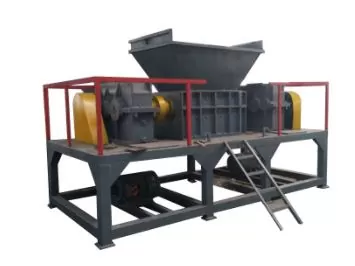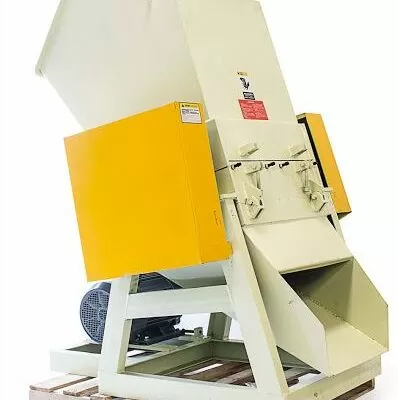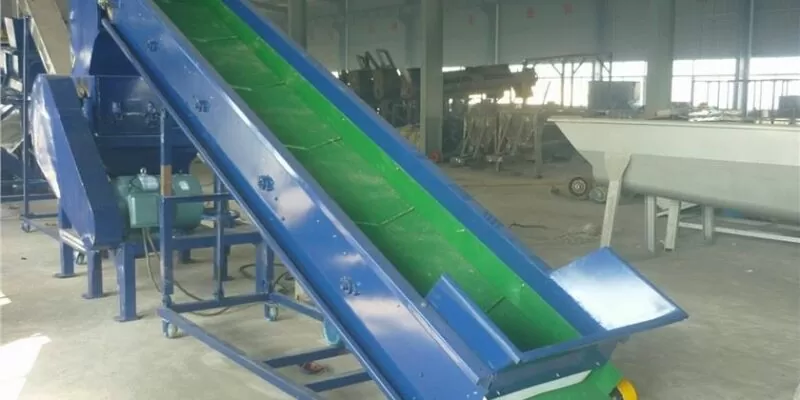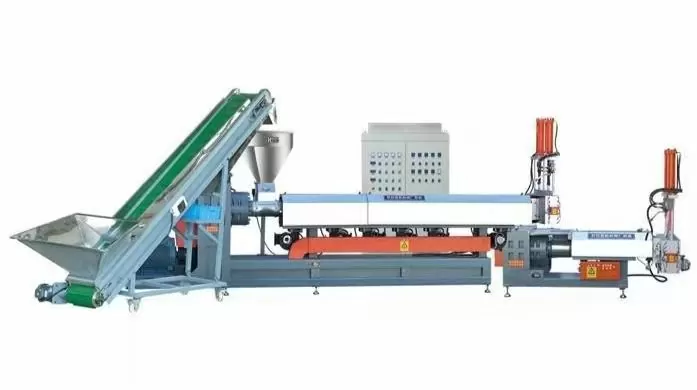I still remember the day I struggled with piles of unusable plastic waste in our facility. The noise, inefficiency, and frustration were overwhelming. I felt trapped by equipment that just didn’t cut it. I knew that there had to be a better way. I realized that finding the right plastic crushing machine could turn our waste challenges into a profitable recycling venture. I embarked on a journey armed with determination, research, and a little bit of wit to find a solution.
I began by asking myself a simple yet powerful question: “How do I transform our waste into value?” I started researching various plastic crushing machines, analyzing each model’s strengths and weaknesses. I evaluated factors like throughput, energy consumption data support, and durability data support. I discovered that each machine had its own personality and quirks—just like the people who use them. This quest has been both challenging and exhilarating, and I’m eager to share my insights with you.
The journey continues with small but significant breakthroughs that have reshaped our operations. Every insight motivates me to improve our recycling processes.
I am excited to dive deeper into my personal process, revealing the nuances of finding a suitable machine that not only meets our needs but also supports our sustainability goals.

Understanding Your Needs?
Before you jump into the market, I always stress that you must understand your own requirements. I began by listing our plastic types, waste volume, and throughput demands. I asked: What kind of plastic do we handle?
Each plastic type has its own characteristics. Some require heavy-duty crushing, while others need gentler handling. I made sure to align these specifics with our business model. I even compared my initial ideas with industry benchmarks data support.
Every business is unique. I often sit down with my team and map out the process. We talk about our long-term goals and immediate challenges. We know that matching the machine to our specific needs is paramount. Our approach is strategic and data-driven.
I break down the needs into digestible parts. This makes the selection process less intimidating. I consider factors like processing speed, energy usage, and even the machine’s footprint in our facility.
A thorough needs analysis is the foundation. It ensures that the machine we choose fits like a glove rather than a clunky substitute.
Key Features to Look For?
When I evaluate a plastic crushing machine, I start with its technical features. The capacity of the machine is crucial. How much plastic can it process in an hour?
I look for models that deliver a balance between high throughput and low energy consumption data support. Efficiency is not just about speed; it’s also about consistency. A machine that works reliably saves both time and money.
I also pay attention to the design. A user-friendly interface and easy maintenance procedures are non-negotiable. I seek machines that offer modular parts for quick replacement.
The innovation behind the technology always excites me. Advanced safety features, automation capabilities, and low noise levels make the entire operation smoother. This combination of efficiency and safety is exactly what I look for in our equipment.
Remember, technology is constantly evolving. I often compare new models with older ones to gauge improvements in energy efficiency and durability.
I take pride in ensuring that every piece of machinery I invest in is future-proof and adaptable to emerging trends data support.
How to Evaluate Machine Efficiency?
Evaluating machine efficiency is a crucial step. I always start by studying the machine’s output rate. How many kilograms per hour can it handle?
I often ask for live demonstrations. Watching the machine in action helps me gauge its real-world performance data support.
I compare efficiency metrics against industry standards. If a machine is below average, it’s a red flag for me.
Short, focused tests are invaluable. I run trial batches with different plastic types to see how the machine responds.
This testing phase gives me insights into potential downtime and maintenance needs. I note any hiccups in performance and compare them with manufacturer claims.
Every minute of downtime is money lost. Efficiency means consistent operation with minimal interruptions.
I also scrutinize energy consumption. Lower energy usage often means lower operating costs. I find that machines with energy-saving features not only reduce our bills but also contribute to sustainability data support.
By keeping a close eye on efficiency metrics, I can make a well-informed decision that aligns with our business goals.

What About Maintenance and Durability?
Maintenance is often an overlooked aspect when purchasing a plastic crushing machine. I always consider the ease of maintenance.
I ask myself: How long will I have to wait for spare parts? Are the maintenance procedures straightforward?
Durability is key. I look for machines built with high-quality materials that withstand the rigors of daily operation data support.
I value machines with accessible parts. Quick access to internal components reduces downtime.
I prefer models with modular designs. This means if one part fails, I can replace it without overhauling the entire machine.
Regular maintenance schedules are crucial. They help extend the machine’s lifespan and ensure it operates at peak performance.
I consult with technicians and fellow CEOs. Their feedback on maintenance costs and durability is invaluable.
I also review technical manuals and warranty conditions carefully. Every detail counts in the long run.
Choosing a machine is not just about the initial cost but the overall lifetime investment.
Environmental and Safety Considerations?
In today’s business environment, sustainability is more than a buzzword. I always consider the environmental impact of the plastic crushing machine.
Does it meet international safety standards? Is it energy-efficient? I insist on machines that have been certified by reputable agencies data support.
Our commitment to the environment goes hand in hand with our business success.
I also factor in safety features. A machine with emergency stop buttons, protective covers, and noise reduction systems is a must.
I remind myself that a safe machine protects our employees and our reputation.
I keep a checklist of environmental and safety criteria before signing any deals.
The regulatory landscape can be complex. I make sure to keep up with the latest guidelines.
This proactive approach saves us from potential fines and operational hiccups data support.
It’s all about creating a safe, efficient, and environmentally friendly workspace.
Cost and ROI Analysis?
Budget constraints and return on investment (ROI) are always at the forefront of my decision-making process.
I set a realistic budget and then calculate the potential savings the machine could bring.
I analyze costs not just in terms of purchase price, but also operational expenses like energy, maintenance, and downtime data support.
Every dollar counts. I break down the total cost of ownership (TCO) to ensure the investment makes financial sense.
I compare different models and negotiate terms with suppliers.
It’s a numbers game where every benefit must outweigh the costs.
I also look at the payback period. How quickly will the machine pay for itself?
For me, a shorter payback period is always more appealing.
Detailed ROI projections are essential. They help justify the expenditure to our stakeholders data support.
I make sure to include contingency costs. Unplanned expenses can derail the best-laid plans.
I rely on trusted financial models to assess the long-term benefits of the machine.
The ultimate goal is to enhance profitability while promoting sustainable practices.

Comparing Different Models?
As I sift through the options, I begin comparing different models side by side.
I compile a detailed comparison chart. I list down technical specifications, cost, efficiency, and maintenance factors.
This visual aid is indispensable. It helps me identify which models excel in certain areas and which ones fall short data support.
I share these charts with my team. We hold discussions and debates.
We consider every parameter carefully.
It is a collaborative process. Each insight brings us closer to the ideal machine for our facility.
I also consult case studies from similar businesses. Their experiences often mirror our challenges.
Learning from others saves time and resources. I appreciate the honest feedback from companies that have already taken the plunge data support.
Navigating the Purchasing Process?
Once I narrow down my options, I move to the purchasing phase.
This stage involves negotiations, final inspections, and ensuring the machine meets all our requirements.
I make it a point to get a live demonstration before signing any agreements data support.
It’s important to feel confident about the performance of the equipment.
I discuss warranty terms and after-sales service.
I want to be sure that any issues down the line will be handled promptly.
Every contract clause is reviewed with a fine-tooth comb.
Transparency and accountability are my watchwords.
I also engage with customer service teams. Their responsiveness and willingness to support provide added assurance.
I value companies that stand behind their products.
A smooth purchasing process builds trust and lays the foundation for a lasting business relationship data support.
Integrating and Optimizing the Machine?
After the machine is installed, the work is far from over.
Integration into our existing workflow is crucial.
I personally oversee the installation and training sessions.
Ensuring that every operator understands the machine is key to maximizing efficiency data support.
We adopt a phased approach.
I encourage a trial period to iron out any teething problems.
Regular performance reviews help us tweak operations and optimize machine settings.
This continuous improvement cycle is what keeps our operations at peak performance.
I also emphasize the importance of software integration.
Modern plastic crushing machines come with monitoring systems that track performance in real time.
I use this data to schedule timely maintenance and predict any issues before they become major problems data support.
Working closely with the technical team is essential.
I foster an environment where feedback is welcomed and acted upon.
Every suggestion is a step toward operational excellence.

Staying Ahead in the Industry?
The recycling industry is constantly evolving.
I keep my finger on the pulse of emerging trends and technological advances.
Attending trade shows and conferences is part of my routine.
I network with industry experts and share insights on future innovations data support.
I also invest in continuous learning.
I read research papers, industry reports, and monitor market shifts.
Staying informed allows me to make proactive decisions.
It ensures that my business remains competitive and agile.
I embrace change with an open mind.
New technologies can disrupt the market in unexpected ways.
I remain adaptable and ready to pivot strategies when needed data support.
My approach is to always stay one step ahead.
I encourage my team to innovate.
Every idea, no matter how small, is given a chance to flourish.
This collaborative spirit drives our company forward and secures our leadership in the industry.
Conclusion
In short, finding the right plastic crushing machine demands clear needs assessment, thorough research, and smart investment.
I hope my journey inspires you to take decisive, informed steps toward a better recycling future.
